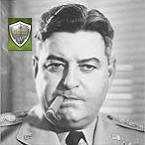ORIGINAL: madner
But the Flak-41 had his own sets of problem, after Tunisia it wasn't used outside of Germany.
From the around 10 000 8.8 Germany produced only about 500 were Flak 41, and the Luftwaffe ordered them to address the perceived ceiling deficit of the L/56 gun. So they spent they time defending the cities.
For the Wehrmacht that meant those guns could as well not exist.
Well, of course not - for the reasons I've already put forth. They could have produced it instead of the AT gun, but they chose not to. The fact is that it existed and could have provided the same power as the AT gun, plus served in the Flak role. That it was not used in the frontlines proves my point: Later in the war the Allies were becoming more proficient, and using Flak in an AT role didn't work as well as it had. Time for a true AT gun.




